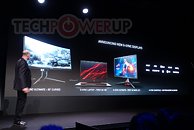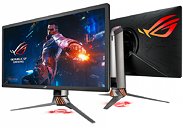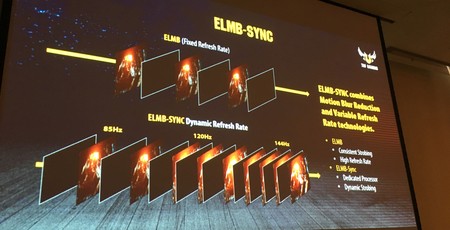Raevenlord
News Editor
- Joined
- Aug 12, 2016
- Messages
- 3,755 (1.15/day)
- Location
- Portugal
| System Name | The Ryzening |
|---|---|
| Processor | AMD Ryzen 9 5900X |
| Motherboard | MSI X570 MAG TOMAHAWK |
| Cooling | Lian Li Galahad 360mm AIO |
| Memory | 32 GB G.Skill Trident Z F4-3733 (4x 8 GB) |
| Video Card(s) | Gigabyte RTX 3070 Ti |
| Storage | Boot: Transcend MTE220S 2TB, Kintson A2000 1TB, Seagate Firewolf Pro 14 TB |
| Display(s) | Acer Nitro VG270UP (1440p 144 Hz IPS) |
| Case | Lian Li O11DX Dynamic White |
| Audio Device(s) | iFi Audio Zen DAC |
| Power Supply | Seasonic Focus+ 750 W |
| Mouse | Cooler Master Masterkeys Lite L |
| Keyboard | Cooler Master Masterkeys Lite L |
| Software | Windows 10 x64 |
ASUS in partnership with NVIDIA announced at COMPUTEX 2019 their first Mini-LED powered PC monitor, which promises to bring the dimming zone game up to an unprecedented level - at least, on IPS technology. The usage of Mini-LED as lighting source for the ROG Swift PG27UQX means that there are many more areas that can be dimmed and brightened according to the displayed content: 576 of them, really, with each being comprised of mini LEDs that are a mere 200-300 micrometers in size.
The ROG Swift PG27UQX features a 27" panel with HDR support (HDR 1000 certification with up to 1,000 nits brightness). It's overclockable to a 144 Hz refresh rate, and color-wise offers DCI-P3 97% and Adobe RGB with quantum-dot technology for 99% coverage. ASUS says that the local dimming capabilities also allow for lower energy consumption (which does make sense). Connector-wise, we're looking at DisplayPort v1.4, HDMI (v2.0), 3x USB 3.0 and 1x 3.5 mm earphone jack. Being a G-Sync Ultimate panel, it features NVIDIA's latest G-Sync processor, which should bringing pricing to even higher levels than you are already expecting.



View at TechPowerUp Main Site
The ROG Swift PG27UQX features a 27" panel with HDR support (HDR 1000 certification with up to 1,000 nits brightness). It's overclockable to a 144 Hz refresh rate, and color-wise offers DCI-P3 97% and Adobe RGB with quantum-dot technology for 99% coverage. ASUS says that the local dimming capabilities also allow for lower energy consumption (which does make sense). Connector-wise, we're looking at DisplayPort v1.4, HDMI (v2.0), 3x USB 3.0 and 1x 3.5 mm earphone jack. Being a G-Sync Ultimate panel, it features NVIDIA's latest G-Sync processor, which should bringing pricing to even higher levels than you are already expecting.



View at TechPowerUp Main Site








